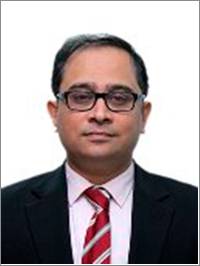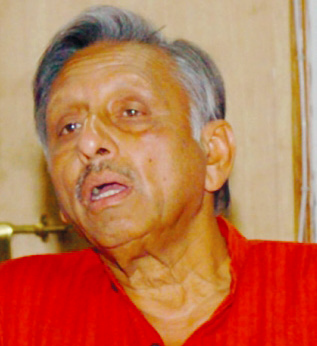
WHAT MAKES PRANAB MUKHERJEE’S TENURE AS PRESIDENT UNIQUE
As Pranab Mukherjee exits the Rashtrapati Bhavan to hand over the reins to Ram Nath Kovind – India’s 14th president, it is an appropriate time to look back to steps and actions that were taken by him that made his tenure unique from others
Ordinances and Mercy petitions
Pranab Mukherjee’s tenure’s biggest highlight could be the tough stance he took when it came to his judicial powers. Unlike many of his predecessors who seemed to think twice when it came to reviewing mercy petitions, Mukherjee was quite hands on. Of the 34 mercy petitions that were presented to him, he rejected 30, a number which is second only to G Venkataraman. He also promulgated or repromulgated 26 ordinances.
Peoples president
Under his tenure, many steps were taken to make Rashtrapati Bhavan closer to the common man. Steps were taken to reduce security checks within the Rashtrapati Bhavan to make it more inclusive for people. Many important events were shifted to the Rashtrapati Bhavan so that the public won’t suffer from security measures due to presidential movement.
Mukherjee also became the first president to take teaching classes for the school children. An in-residence program aimed at encouraging talented scholars and artists was also set up. The official twitter account of the Rashtrapati Bhavan was launched on July 1, 2014.
Brought an end to the colonial hangover
Perhaps one of the greatest achievement of Pranab Mukherjee was the fact that he brought an end to certain practices that were a product of the imperial rule in the country. He ended the practice of using the honorific title ‘His Excellency’ while addressing the President on the first anniversary of his term. Even governors were encouraged to follow this practice.
Welfare programs
A Smartgram pilot project was launched on July 2, 2016 with the aim of developing and modernising villages. At the initial stage, five villages from Haryana was included in the program. Under another initiative Mukherjee also launched the 4S initiative ie; samskriti, samagam, sparsh and sanskar aimed at overall welfare of senior citizens and children residing in the estate.
Re-development of the Rashtrapati Bhavan
A new museum was established in the estate’s carriage halls and stables building. Roof top solar panels, water harvesting and recycling programmes were initiated in the Bhavan to make it energy efficient and self-reliant. Also, measures were taken to re-introduce the heritage Buggy in the estate after a gap of over three decades. Pranab Mukherjee Public Library was also set up in the estate. This included the cataloguing and bar coding of the vast number of books as part of the EPustakalaya project. Apart from all this, the presidential retreat in Dehradun known as the Rashtrapati Ashiana was also renovated.
Source: Moneycontrol

President Pranab Mukherjee at the farewell hosted by him for the President at Hyderabad
House , in New Delhi. (Source: PTI)
Pranab Mukherjee’s tenure as the 13th President of India ended n July 24, bringing to a close a political career spanning nearly five decades in government and in the Congress party, both extremely eventful and hugely successful.
Pranab Mukherjee’s political journey started in West Bengal in the 1969 by-election in Midnapore when he was the election agent for V K Krishna Menon, who ran as an independent candidate. He caught the eye of Siddhartha Shankar Ray who recommended him to prime minister Indira Gandhi,who gave him a Rajya Sabha seat. Thus at the age of 35, Pranabda entered the Rajya Sabha.
Within a short period he had gained Mrs Gandhi’sconfidence and became a minister of state in her government.
In the wake of Rajiv Gandhi’s tragic assasination, the Congress party emerged as the single largest party, but there was no clarity as to who would be Prime Minister.Pranabda was not an MP and PV Narasimha Rao had announced his retirement from active politics. Arjun Singh and Sharad Pawar became prime contenders. But as the number of MPs from south India was large, Narasimha Rao was called out of retirement and chosen to be Prime Minister.
During Cabinet formation, Narasimha Rao actively consulted his friend and colleague, Pranabda. It appeared certain that Pranabda would become the finance minister. But quite unexpectedly, he was left out of the Cabinet altogether and Dr Manmohan Singh was named finance minister. Pranabda was shocked. As consolation, Narasimha Rao asked Pranabda to take up the deputy chairmanship of the Planning Commission.
Now when a former finance minister is left out of the Cabinet and sent to the Planning Commission, it clearly signals the end of an active political career. Pranabda told the Prime Minister that he would think about the offer. Narasimha Rao is supposed to have remarked, “Take as much time as you like, but join on Monday.” Narasimha Rao assured Pranabda that he would one day tell him the reason for his exclusion from the Cabinet, but he never did.
One can describe Pranabda in one word – a survivor. His survival skills in politics are indeed remarkable. After Rajiv Gandhi became prime minister in 1984, he dropped Pranabda from the Cabinet and also from the Congress Working Committee. He was subsequently expelled from the Congress party itself, pushing Pranabda to launch his own party, the ‘Rashtriya Samajwadi Congress,’ in 1986. But his political career had clearly stalled.
He later admitted he was no mass leader. Within two years, he was back in favour with Rajiv Gandhi and merged his party in the Congress. Despite all the ups and downs, he always bounced back.
Pranabda is very good at keeping secrets. In fact, Indiraji used to say, “Whenever Pranabda is given any confidential information, it never comes out of his belly.What comes out is only the smoke from his pipe.” His excellent command over the English language, drafting skills, razor-sharp memory, vast knowledge of national and international affairs and mastery of parliamentary procedures made him indispensable in the cabinet and the Party.Whenever any complicated and contentious issue arose in the Cabinet, he was called upon to resolve it. He would invariably be asked to draft various AICC resolutions and chair different party committees.
In Dr Manmohan Singh’s cabinet,Pranabda was the de facto number two. He was the chairman of more than 95 GoMs and EGoMs (Empowered Group of Ministers). I was a member of many such groups dealing with Enron, spectrum, WTO, Bhopal disaster and disinvestment. One time the issue of amending the law to remove the domicile condition for contesting Rajya Sabha elections came up for discussion. Dr Manmohan Singh was elected from Assam and Pranabda had been once elected from Gujarat. The proposal was accepted after a brief discussion as was the proposal for open voting. I insisted that the same condition be made applicable to the legislative council elections in the states. But Pranabda strongly opposed this and my proposal was not accepted. Unfortunately, “horse trading” in legislative council elections continues unabated.
Pranabda worked under three Prime Ministers – Indiraji, Narasimha Rao and Dr Manmohan Singh. He is the only finance minister to have presented budgets both before the 1991 reforms in the license permit raj regime as well after the 1991 economic reforms. He took bold decisions after the global economic crisis of 2008 which helped shield the Indian economy. As commerce minister in 1993, Pranabda championed the cause of trade liberalisation. But as India dealt with GATT, especially its intellectual property rights regime, the fear was drug prices would increase. Pranabda’s skilful negotiations not only prevented that from happening, but also charted India’s entry into the WTO.
The Indo-US nuclear deal over 2005-8 was a landmark achievement of the Manmohan Singh government.Both countries wanted to get India out of the discriminatory nuclear world order, facilitate India’s participation in nuclear commerce and allow it benefits of clean nuclear energy. But because the Left parties supported the UPA government in power and the Left was against India joining hands with the US, a coordination committee between the UPA and the Left parties was constituted under Pranabda’s chairmanship – and myself as its convenor. The Committee succeeded in obtaining the consent of the Left, thanks only to the skilful leadership of Pranabda and his personal equation with its leaders.
He fulfilled the role of President of India with great dignity. Concerns were raised when the government changed after the 2014 election. But he did not needlessly confront prime minister Narendra Modi’s government and always went by the book. At the same time, he often publicly appealed for tolerance, lamented the poor quality of parliamentary debate, and urged protection of the Constitution and democratic values. He was certainly not a “rubber-stamp President”.
Source: The Indian Express





Be the first to comment